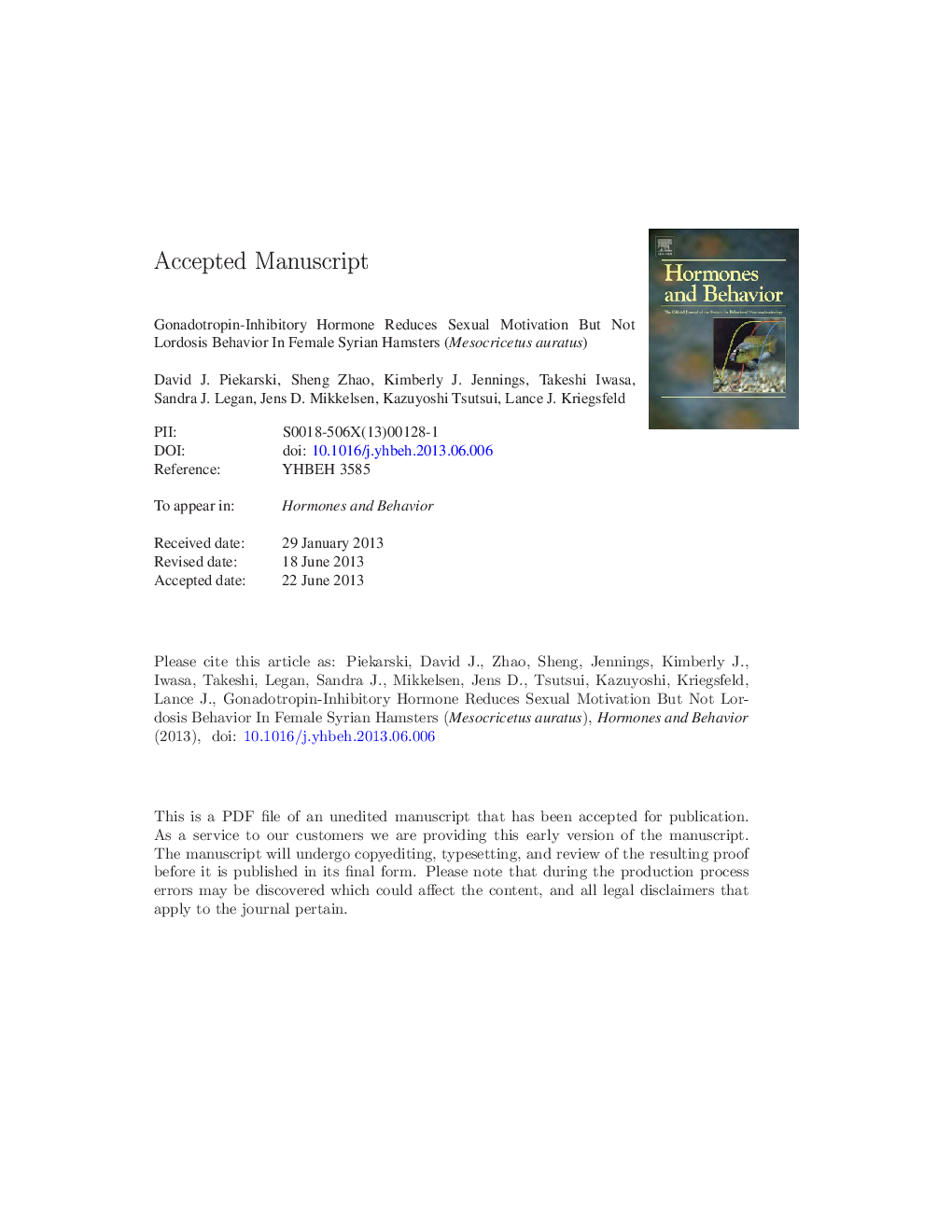| کد مقاله | کد نشریه | سال انتشار | مقاله انگلیسی | نسخه تمام متن |
|---|---|---|---|---|
| 10301099 | 540659 | 2013 | 43 صفحه PDF | دانلود رایگان |
عنوان انگلیسی مقاله ISI
Gonadotropin-inhibitory hormone reduces sexual motivation but not lordosis behavior in female Syrian hamsters (Mesocricetus auratus)
دانلود مقاله + سفارش ترجمه
دانلود مقاله ISI انگلیسی
رایگان برای ایرانیان
کلمات کلیدی
موضوعات مرتبط
علوم زیستی و بیوفناوری
بیوشیمی، ژنتیک و زیست شناسی مولکولی
علوم غدد
پیش نمایش صفحه اول مقاله

چکیده انگلیسی
Reproductive success is maximized when female sexual motivation and behavior coincide with the time of optimal fertility. Both processes depend upon coordinated hormonal events, beginning with signaling by the gonadotropin-releasing hormone (GnRH) neuronal system. Two neuropeptidergic systems that lie upstream of GnRH, gonadotropin-inhibitory hormone (GnIH; also known as RFamide related peptide-3) and kisspeptin, are potent inhibitory and excitatory modulators of GnRH, respectively, that participate in the timing of the preovulatory luteinizing hormone (LH) surge and ovulation. Whether these neuropeptides serve as neuromodulators to coordinate female sexual behavior with the limited window of fertility has not been thoroughly explored. In the present study, either intact or ovariectomized, hormone-treated female hamsters were implanted for fifteen days with chronic release osmotic pumps filled with GnIH or saline. The effect of GnIH on sexual motivation, vaginal scent marking, and lordosis was examined. Following mating, FOS activation was quantified in brain regions implicated in the regulation of female sexual behavior. Intracerebroventricular administration of GnIH reduced sexual motivation and vaginal scent marking, but not lordosis behavior. GnIH administration altered FOS expression in key neural loci implicated in female reproductive behavior, including the medial preoptic area, medial amygdala and bed nucleus of the stria terminalis, independent of changes in circulating gonadal steroids and kisspeptin cell activation. Together, these data point to GnIH as an important modulator of female proceptive sexual behavior and motivation, independent of downstream alterations in sex steroid production.
ناشر
Database: Elsevier - ScienceDirect (ساینس دایرکت)
Journal: Hormones and Behavior - Volume 64, Issue 3, August 2013, Pages 501-510
Journal: Hormones and Behavior - Volume 64, Issue 3, August 2013, Pages 501-510
نویسندگان
David J. Piekarski, Sheng Zhao, Kimberly J. Jennings, Takeshi Iwasa, Sandra J. Legan, Jens D. Mikkelsen, Kazuyoshi Tsutsui, Lance J. Kriegsfeld,